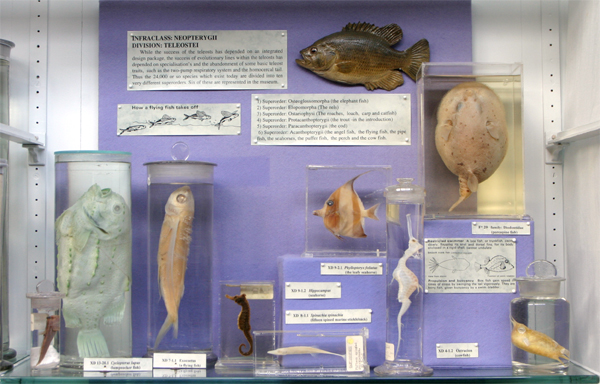
SUPERORDER ACANTHOPTERYGII
The 13,500 species of acanthopterygians (spiny fins) are the largest and most diverse group of fishes; they make up 60% of all fish species and are classified into over 250 families in 14 orders. The name alludes to the presence of spines either in front of the soft dorsal fin or incorporated into the anterior part of the dorsal fin or existing as a separate first dorsal fin. The spines protect them from predators - by increasing their size - and in some cases are associated with venomous glands. Acanthopterygians’ scales are ctenoid with small comblike projections on the back.

This enormous assemblage of species possibly represents two main evolutionary groups now classified as the series Atherinomorpha (285 species) and the series Percomorpha (13,300+ species). The few small species shown here illustrate the diversity of form and behaviour in one order of atherinomorphs, three orders of percomorphs and two orders of such highly modified fish that it is hard to know where to place them although it is assumed they originally evolved from highly derived perciform ancestors.
Order Beloniformes - flying fish.
Order Scorpaeniformes - lumpsucker.
Order Gasterosteiformes – sticklebacks, seahorses.
Order Perciformes – rock bass, remora, mudskipper, angelfish, Greater weever, eelpout.
Order Pleuronectiformes - flatfish.
Order Tetraodontiformes - porcupine fish, cowfish, sunfish.






